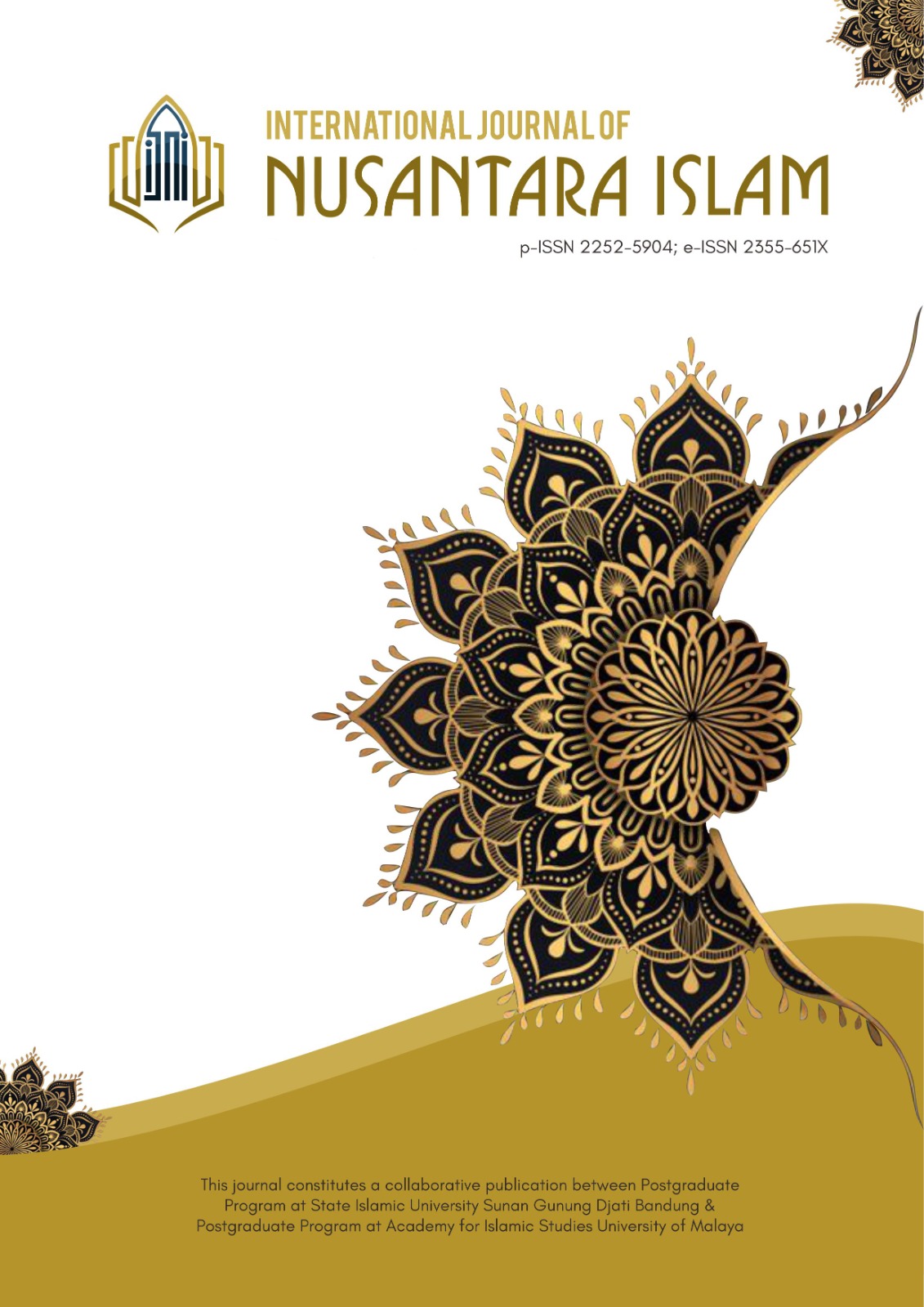View of the Issue About Changes in the Age of Marries for Women in Law Number 16 of 2019
Main Article Content
Abstract
Article Details
The Authors submitting a manuscript do so on the understanding that if accepted for publication, copyright of the article shall be assigned to International Journal of Nusantara Islam, Sunan Gunung Djati State Islamic University.
The copyright encompasses exclusive rights to reproduce and disseminate articles in all forms and media, including reprints, photographs, microfilm, and similar reproductions, as well as translations. Some or all of the contents of this journal can be stored in databases and transmitted in any form and media without the need for written permission from the International Journal of Nusantara Islam, Sunan Gunung Djati State Islamic University.
The Editors and the Advisory International Editorial Board make every effort to ensure that no wrong or misleading data, opinions or statements be published in the journal. In any way, the contents of the articles and advertisements published in the International Journal of Nusantara Islam (IJNI) are sole and exclusive responsibility of their respective authors and advertisers.
References
Al-Zarqa, A. ibn al-S. M. (2001). Syarh al-Qawa’id al-Fiqhiyyah. Dar al-Qalam.
Armia. (2018). Fikih Munakahat. Manhaji.
Betawi, U. (n.d.). Maqasid Al-Syariah Sebagai Dasar Hukum Islam Dalam Pandangan Al-Syatibi Dan Jasser Audh. Jurnal Hukum, 6(6).
Djazuli, P. H. A. (2019). Kaidah-Kaidah Fikih. Prenada Media.
Fanani, M. (2010). Fiqh Madani konstruksi Hukum Islam di dunia Modern. Pustaka Pelajar.
Kasdi, A. (2014). Maqasiid Syari’ah Prespektif Pemikiran Imam Syatibi Dalam Kitab Al-Muwaffiq. Yudisia, 05(01).
Laksana, T. R. (2018). Himpunan Peraturan Perundang-undangan Republik Indonesia UU Perlindungan Anak. LAKSANA.
Manan, M. A. (n.d.). Reformasi Hukum Islam di Indonesia, Tinjauan dari Aspek Metodologi, Legislasi dan Yurisprudensi. Raja Grafindo Persada.
Mutakin, A. (2017). Teori Maqasid Al-Syari’ah Dan Hubungannya Dengan Metode Istinbath Hukum. Kanun Jurnal Ilmu Hukum, 19(3).
Nuruddin, A. (2010). Metolodogi Penelitian Ilmu Syari’ah. Ciptapustaka Media.
Rafi’, A. (2011). Usul Al-Fiqhi, At-Tiba’ah Wa An-Nasyru. Dar As-Salam.
Sunggono, B. (2015). Metodologi Penelitian Hukum. Rajawali Press.
Syafe’i, R. (2000). Hukum Islam Sebagai Dasar Hukum Universal Dalam Sistem Pemerintahan Modern. Mimbar, 16(4).
Syarifudin, A. (2011). Ushul Fiqih Jilid II. Kencana.
Tohari, C. (2015). Transformasi Hukum Islam Dalam Sistem Tata Hukum di Indonesia. ANALISIS: Jurnal Studi Keislaman, 15(2).
Zulhaily, W. (2005). Al-Fiqh al-Islami wa Adillatuh (Vol. 4).

